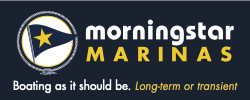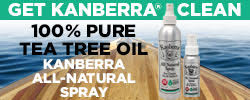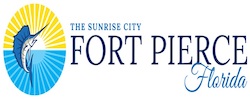Cruising the Western Florida Coastline With a 6-foot Draft
With all of the available information out there, I would have thought that this question would be easy to answer on my own… but I really haven’t been able to figure this out.
Our Selene draws six and is LOA 62. We are considering the possibility of a house purchase in the St. Pete to Naples area. Looks like a great area. So, we are planning a cruise up there from here in Key West for a week or so to check it out. Here’s the question: Where is it deep enough for our boat?
I haven’t been able to ID any marinas that offer sufficiently deep entrances and reasonably easy/deep navigation routes from here in KW. This is enough of an issue for our little cruise; but, it also raises the issue of whether it is reasonable to own a boat like ours on the West Coast vs. the East Coast of FL. I know there are many fans of this area of the world on the list. Can any of you offer any encouragement on this point? Suggested routes/marinas?
Thanks.
Mike
Mike Curreri
M/V Blue Grotto
Mike
You might want to check out Punta Gorda. It is easily accessed through Boca Grande Pass and Charlotte Harbor. Fisherman’s Village Marina indicates a 7.5 ft approach at MLW and at least that at some of the docks. See www.fishville.com Winter low tides and strong North winds can make this less.
Punta Gorda has a large collection of canals, a good portion are considered “sailboat” water which should accommodate your boat, but like all of the other deeper draft vessels, you likely would need to play the tides. A lot of us here enjoy having our boats in our back yards.
Good Luck
Chris
Personal opinion, 6 feet draft is perfectly fine for FL West Coast. I have traversed from Ft Myers to Anclote with my boat, 5’3″ draft and have never bumped while inside the ICW channel. I have also done a delivery of an Irwin 65 with 6′ draft from St Pete to Miami (via Key West) with no draft issues. Many if not most marinas also can accomodate your draft. To name a few St Pete muni, Harborside, Gulfport (6’6″ depth) Twin Dolphin, Regatta Point, Rivera Dunes, Clearwater muni, Tierra Verde.
One thing you will have to watch out for is sand bars stretching out to sea, sometimes for over a mile, from each and every pass. Come on up, the water is fine…
Joel Wilkins
m/s Miss Magoo
Columbia 45
Mike,
Winter in Florida is when tides tend to be lower and water shallower. Tides on the gulf coast of western Florida are diurnal; one high tide per day, mostly in the mid-to-late afternoon. The pattern does vary slightly with new and full moon cycles. Western Florida is a shelf; not deep water. Most of south and west of Florida is “OK” – but not flush – for 6ft draft. There are some exceptions.
When in Naples, research carefully the old ICW between Naples and Marco, through Goodland. The last time I mentioned that stretch – from Doctor’s Pass to Rookery Bay – I was told it I was nuts and it was fine. But, we’ve grounded in there with 4ft draft, so caveat emptor.
You will not be able to do Coon Key Pass without significant anxiety; all of the north of Gullivan Bay entering Coon Key Pass is charted at 5 ft.. Definitely, do that at high high tide.
The Baron River to Everglades City is doable. Depths on the last mile approach into Everglades City will get to less than 6′, but if you go in and out at high tide, you’ll have no problems. Don’t do early day departures from EC. No problem cruising most of the 10,000 Islands.
You will not be able to do the “Yacht Channel” through Florida Bay without significant anxiety, if at all. There is almost no tide in Florida Bay; less than 6 inches. Not enough to help. Prolonged winds can affect water levels a lot in Florida Bay. Stay outside around the bottom; run the Hawk Channel. Come it to overnight at Channel 5, or at the 7-Mile bridge. From Marathon, use the 7-Mile Bridge to come north.
You will be able to enjoy Ft. Myers beach, Ft. Myers and the Caloosahatchee. In the fall, and most springs, you’ll be able to cross Lake O between Ft. Myers and Stuart. Charlotte Harbor is fine. The ICW from Sanibel to Tampa to Tarpon is fine. Research the armpit (Great Bend) very carefully, especially in winter. The Panhandle is fine except for Government Cut at Apalachicola. There, play the tides.
The West Coast is much, much better cruising than the East Coast. On the east coast, you have miles and miles of very wide river and very narrow channel. You can’t see much, and it’s boring. Southeast Florida is the concrete ditch. From Biscayne Bay around to Tampa/Tarpon, it’s a different world; a cruisers paradise!
Hope this is useful.
Jim
Peg and Jim Healy aboard Sanctuary
I agree with almost everything that Jim Healy says about cruising the left coast of Florida. We lived in Clearwater for over 50 years and it was a beautiful place to grow up and a great boating venue. However, Jim is mistaken about only one high tide per day. Take a look atbthemtide tables and you will see two highs and two lows almost every day.
Regards,
Randy Pickelmann
Morning Star lying Sunset Bay Marina, Stuart, Fl
We live in Naples and keep our boat at the Naples City Dock. Our boat draws almost 6ft. We have no issues at the dock or the associated moorings. We also go into Big Marco Pass, which I wouldn’t do at a real low tide. When going into Big Marco, we typically turn north and enjoy the anchorage listed on this site in Johnson Bay.
I wouldn’t take the channel from Marco to Naples, you have to go outside, which is almost always a pleasurable sail. Coming into Naples (Gordon River) stay on the south side. I usually come in between the first and second red markers.
From Key West or from Marathon, it is a pretty easy run to Marco or Naples. I would recommend going from Key West to Marathon, then from Marathon north to Cape Sable. This time of year, the winds are typically North to East, so you will be in the lee of Florida at that point and it is a fairly easy sail from there.
George
s/v John Galt T37
Claiborne:
You are quite right about the value of this T&T Listserve. It is a fantastic resource.
Regarding this question, I also received many responses to this inquiry directly. Ultimately, the first trip will be:
Key West to Punta Gorda, staying at Fisherman’s Village Yacht Basin.
Punta Gorda to Fort Myers, staying at Legacy Harbour Marina.
Fort Myers to Palmetto, staying at Riviera Dunes Marina Resort.
Palmetto to St. Petersburg, staying at St. Petersburg Municipal Marina.
St. Pete to Key West.
Mike Curreri

















Be the first to comment!